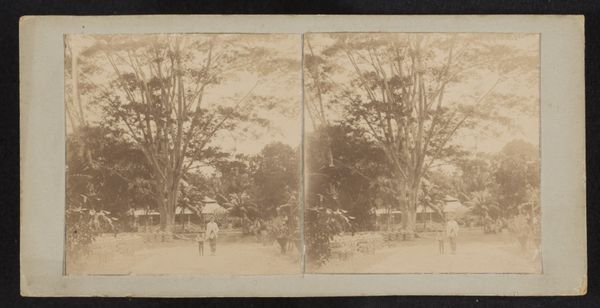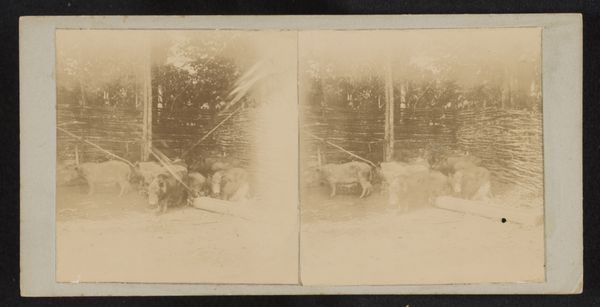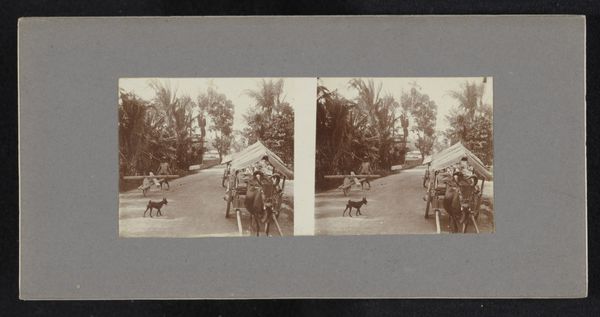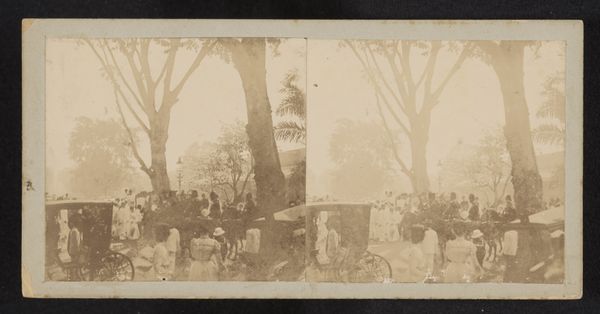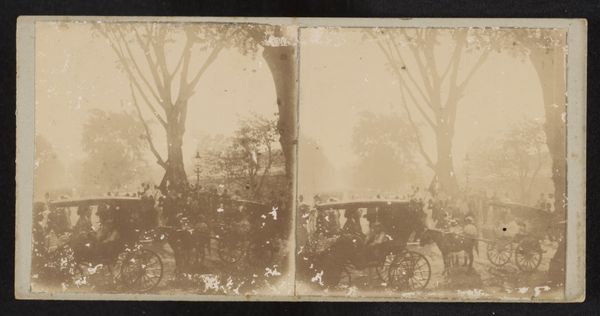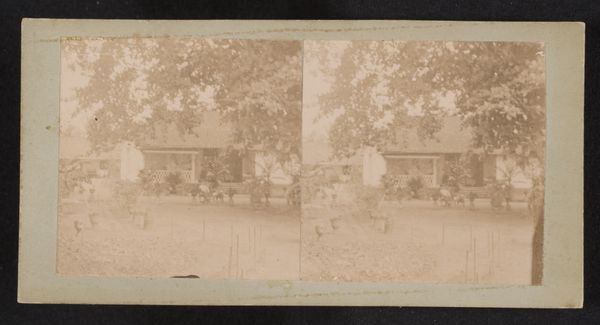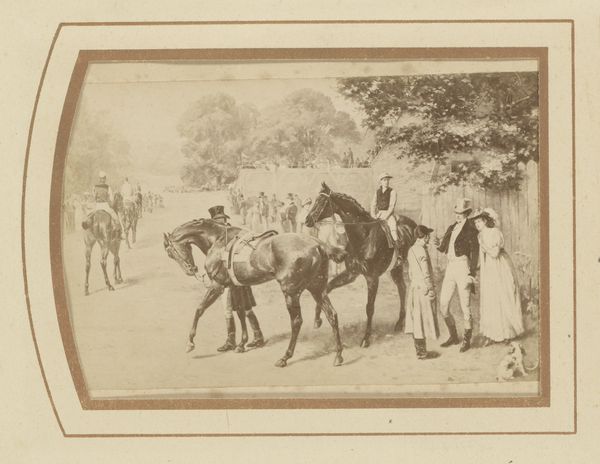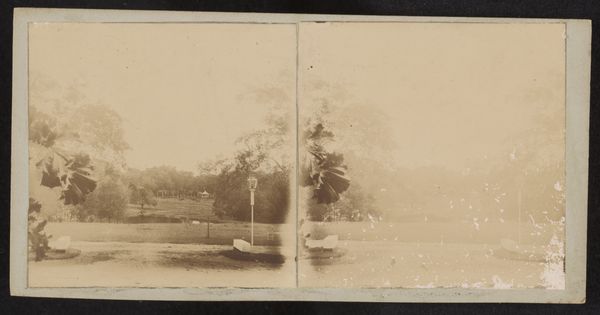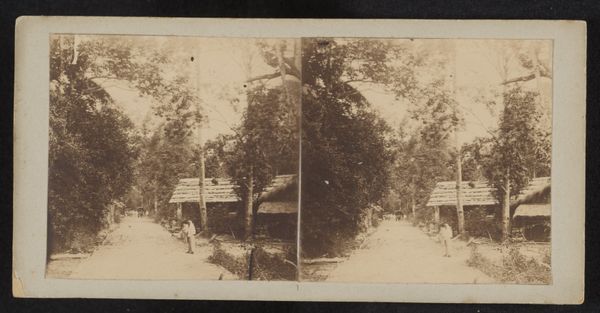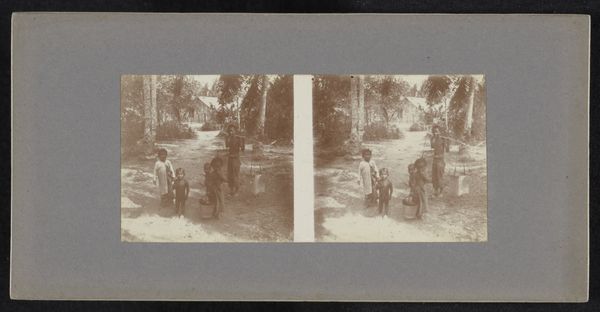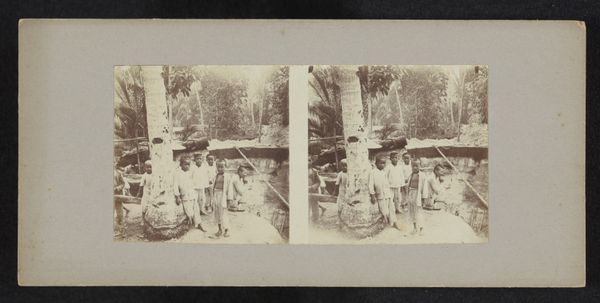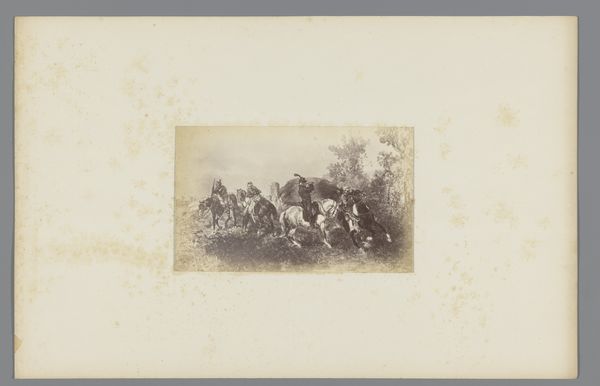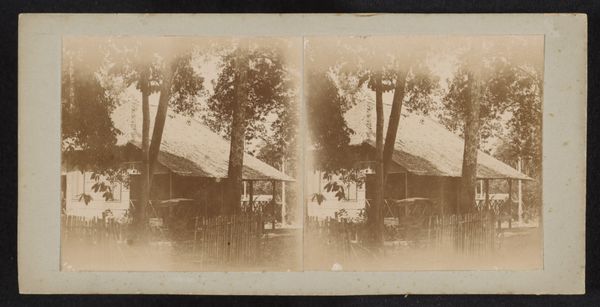
photography, gelatin-silver-print
#
portrait
#
pictorialism
#
landscape
#
photography
#
orientalism
#
gelatin-silver-print
Dimensions: height 80 mm, width 80 mm, height 88 mm, width 178 mm
Copyright: Rijks Museum: Open Domain
Curator: Looking at "Boy on Horse" by Robert Julius Boers, made between 1900 and 1922. This gelatin-silver print now resides in the Rijksmuseum collection. What strikes you immediately? Editor: The overall tone is so soft, almost dreamlike. And the composition, it's very static. It has an undeniable, slightly melancholic charm to it, though. Curator: I agree, there's a distinct stillness. The sepia tones further contribute to that ethereal, timeless quality. Structurally, Boers is playing with horizontal lines and subtle verticals – the horizon, the trees, the figures themselves. It adheres to a pictorialist aesthetic of softly rendered impressions. Editor: But what kind of labor was involved in capturing this particular scene? Who were these people, what was their relationship to Boers, and how did the making of the image itself reinforce social hierarchies of the time and location? It has undertones of orientalism. It raises questions about who had the privilege and ability to record the images. Curator: Absolutely. The medium of gelatin-silver printing allowed for mass reproduction, but it also presupposed a certain economic status to afford equipment. Boers, as the photographer, positions himself as the active observer, framing and defining this exotic, "Oriental" space, solidifying a clear power dynamic. Editor: And even considering the horse, it isn't simply a compositional element; the animal has labored and contributed to modes of production. Consider also, what the sitters were paid (if they were paid at all) to collaborate with the image-making process. These are not trivial questions. Curator: These complexities remind us that even ostensibly "beautiful" photographs are laden with socioeconomic realities and mediated gazes. The play of light and shadow here—the semiotic density of this photographic construction—must be interrogated further, as its beauty potentially occludes its problematic history. Editor: Precisely. It allows a discussion that brings into focus the value we give art today in the twenty-first century. Curator: A single image becomes a complex nexus, revealing much about the artist's technique, the social landscape, and our own position as viewers today. Editor: Indeed, much food for thought embedded within this captured moment.
Comments
No comments
Be the first to comment and join the conversation on the ultimate creative platform.
